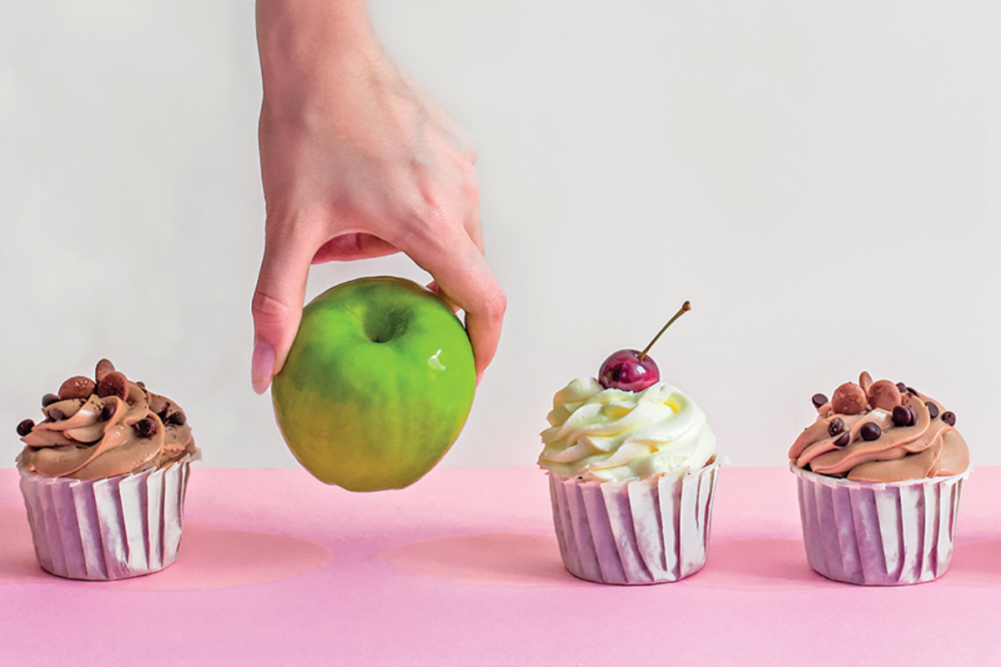 KANSAS CITY — The term “guilt-free” often is included on packages of food and beverages formulated with low or no sugar, fat, carbohydrates or calories. The seemingly innocent descriptor creates unnecessary confusion and negativity around certain foods and ingredients.
KANSAS CITY — The term “guilt-free” often is included on packages of food and beverages formulated with low or no sugar, fat, carbohydrates or calories. The seemingly innocent descriptor creates unnecessary confusion and negativity around certain foods and ingredients.
“The prominent positioning of terms like ’guilt-free’ or ‘natural’ or ‘clean’ contributes to a collective cultural shift toward a disordered mindset around food,” said Cara Harbstreet, registered dietitian and owner of Street Smart Nutrition, Kansas City. “What may not begin as a problematic association with these marketing terms can quickly develop into a hesitancy or fear of eating foods that are categorized as unnatural, unhealthy or ‘dirty.’ Without explicitly saying as such, these marketing terms imply that other foods are inferior in quality and/or safety, and that simply is not the case.”
Appearing in cookbooks, blogs and magazines, the term “guilt-free” typically refers to recipes or recommendations for snacks, desserts or comfort food — suggesting such eating occasions are akin to sin.
A study conducted several years ago by researchers at the University of Canterbury in New Zealand analyzed whether consumers associated chocolate cake with “celebration” or “guilt” and the effects of such perceptions. The researchers found those who associated chocolate cake with guilt reported unhealthier eating habits and lower levels of perceived control over healthy eating.
“Guilt-free” and similar claims prey on consumers’ insecurities and feed into toxic diet culture, a system of beliefs and expectations celebrating thinness above physical and mental health. A self-described “non-diet dietitian,” Ms. Harbstreet advocates intuitive eating, stripping away “good” or “bad” associations with food.
“I encourage my clients to consider what their true food preferences are when shopping, as well as their budget and lifestyle preferences,” she said. “Additionally, we work to look past the flashy front-of-pack labeling and focus on the ingredient list, nutrition facts label and allergen claims to determine if a particular food is better for them than another.”
Alyssa Pike, registered dietitian and senior manager of nutrition communications at the International Food Information Council, in a blog post earlier this year discussed how pervasive messaging around what to eat — or what not to eat — may lead to anxiety around food. She cited a survey this past June examining consumer perspectives on food ingredients. Nearly half of consumers surveyed identified as “clean” eaters, though definitions of clean eating varied among the respondents.
“Given our social and media environment, it makes sense that we would think certain foods are good and others are bad,” she said. “We hear so many rules, beliefs and ideas about food from family members, strangers on the internet or celebrities, it can be a lot to take in, and often what we have heard is not based in science or the nuance that nutritious eating requires. For some, the desire to be healthy, coupled with disordered food beliefs and other life challenges, can lead to an unhealthy obsession with eating healthy.”
Food choices are not a measure of one’s virtue. Cravings do not indicate weakness. Ordering a salad rather than a burger does not confer moral superiority.
There are numerous ways to highlight a product’s potential health benefits, identifying measurable attributes consumers may care about, such as high-fiber, low-sugar or gluten-free. Guilt is not an ingredient. Please leave it out of food marketing.




